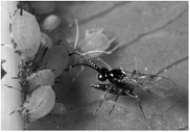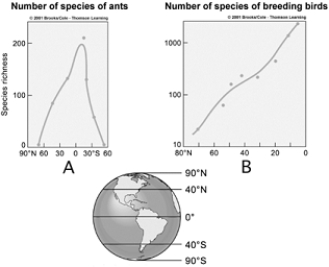Correct Answer

verified
Correct Answer
verified
Multiple Choice
 -Pioneer plant species are usually characterized by
-Pioneer plant species are usually characterized by
A) small size.
B) high dispersal rates.
C) slow maturation.
D) high dispersal rates and high numbers of offspring
E) small size, efficient dispersal mechanisms, and slow maturation.
Correct Answer

verified
Correct Answer
verified
Multiple Choice
An interaction in which one species benefits and the second species is neither harmed nor benefited is
A) mutualism.
B) parasitism.
C) commensalism.
D) competition.
E) predation.
Correct Answer

verified
Correct Answer
verified
Essay
Classification.Respond to the following statements in reference to the five kinds of species interactions listed below. a.competition b.parasitoidism c.mutualism d.commensalism e.parasitism -Each species occupies a certain __________characterized by physical and chemical features and by the array of other species living in it.
Correct Answer

verified
Correct Answer
verified
Essay
Classification.Respond to the following statements in reference to the five kinds of species interactions listed below. a.competition b.parasitoidism c.mutualism d.commensalism e.parasitism -When a tropical bird places its nest in association with a wasp nest on the same tree, the interaction is this.
Correct Answer

verified
Correct Answer
verified
Multiple Choice
An interaction between two species in which both species benefit is
A) mutualism.
B) parasitism.
C) commensalism.
D) competition.
E) predation.
Correct Answer

verified
Correct Answer
verified
Essay
MATCHING Matching.Choose the most appropriate answer for each. a.blending in and being hidden by the background b.where an organism is generally located in a community c.one organism benefits at another organism's expense d.traditionally a self-sustaining array of interacting organisms that is best suited for a particular environment e.lichens on newly hardened, newly cooled lava f.robins and human populations g.the yucca moth and the yucca h.one species is eliminated from an area of niche overlap i.tasty species resembles repugnant one j. the process that leads from a pioneer community to a mature community k.natural reforestation of burned-over forest -secondary succession
Correct Answer

verified
Correct Answer
verified
Essay
MATCHING Matching.Choose the most appropriate answer for each. a.blending in and being hidden by the background b.where an organism is generally located in a community c.one organism benefits at another organism's expense d.traditionally a self-sustaining array of interacting organisms that is best suited for a particular environment e.lichens on newly hardened, newly cooled lava f.robins and human populations g.the yucca moth and the yucca h.one species is eliminated from an area of niche overlap i.tasty species resembles repugnant one j. the process that leads from a pioneer community to a mature community k.natural reforestation of burned-over forest -commensalism
Correct Answer

verified
Correct Answer
verified
Multiple Choice
A keystone species
A) has a disproportionately large effect on a community relative to its abundance.
B) controls the prey species.
C) may increase or decrease the number of prey species in a community.
D) has a disproportionately large effect on a community relative to its abundance and may increase or decrease the number of prey species in a community.
E) has a disproportionately large effect on a community relative to its abundance, controls the prey species, and may increase or decrease the number of prey species in a community.
Correct Answer

verified
Correct Answer
verified
Multiple Choice
 Use the figure above to answer the following questions.The graphs illustrate diversity patterns for ants (A) and breeding birds (B) .
-Which graph shows that species diversity is much less at the equator than at 60 degrees north latitude?
Use the figure above to answer the following questions.The graphs illustrate diversity patterns for ants (A) and breeding birds (B) .
-Which graph shows that species diversity is much less at the equator than at 60 degrees north latitude?
A) A
B) B
C) both
D) neither
E) not enough data is provided to answer the question
Correct Answer

verified
Correct Answer
verified
Multiple Choice
Which of the following statements is NOT generally characteristic of parasites?
A) They are specialists and usually are able to affect only one variety of hosts.
B) They inflict serious injury and kill their hosts.
C) Some reside inside their hosts, whereas others live outside their hosts.
D) Their host may be a plant as well as an animal.
E) Plants as well as animals can be parasites.
Correct Answer

verified
Correct Answer
verified
Showing 61 - 71 of 71
Related Exams